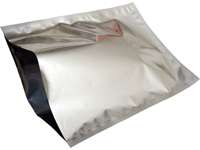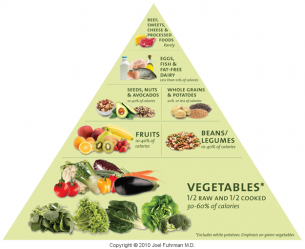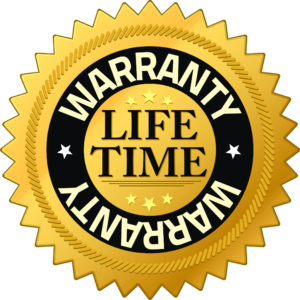Yesterday, I mentioned the characteristics of Immediate Nutrition components. They included the following:
- Easily & Safely stored
- Easily Accessible
- Open & Eat
- Retains shelf-life of 3-6 months
- Light-weight & Compact
- Weather-Resistant Packaging
- Nutrient-Dense*
- Tastes Good & Your Body Processes it well
As promised, I'll go into a little more detail on the points mentioned above.
Easily & Safely stored
This point is face-value obvious. In your Immediate Nutrition preps, the ability to safely store food that is properly packaged to retain its integrity and constitution cannot be underestimated. Often, hermetically sealed mylar pouches are used as the packaging of choice. They block the sunlight from diminishing shelf-life through heat and translucency. Mylar is also particularly inexpensive to purchase and package yourself. Among other packaging solutions, if you are using a bag or carrying vessel that is vulnerable to crush incidents, I recommend considering a crush-resistant case of some sort to house your nutrient-rich food and medications.
Ideally, choose a packaging option that can be accessed and opened with one hand. This is not particularly due to a potential 127-Hour like situation, but tactically and from much outdoor experience, it is ideal. When considering the storage vessel such as a backpack, duffel bag or other, it is best to develop a compartment pattern that will be relatively uniform for your requirements. In other words, I might decide to always place a pocket-knife and high-energy meal bar in the outermost pocket of every backpack and a particular compartment of your duffel.
Again, not absolutely necessary, but developing a simple system like this will help to lessen the “thinking load” at a critical moment, should one arise. It would also prove extremely beneficial to store a meal bar/snack in a free pocket of your shorts or shirt, cargo pants, tactical vest or somewhere on your person. During a time where you might experience extended hours of uninterrupted work eating is often a burden. Having a snack that is easily and quickly accessible will cause almost no interruption to your efforts.
Open & Eat
The idea of Immediate Nutrition is attractive because the working given is that you want to limit the amount of energy expenditure and required resources while you remain engaged in your activities. Being able to simply open & eat your nutrition is like an aircraft being refueled mid-flight.
 Retains shelf-life of 3-6 months
Retains shelf-life of 3-6 months
This point is one that will require more work and research on your part in order to arrive at a custom and practical solution. My motive for suggesting this kind of shelf-life has more to do with my knowledge that most people will not regularly maintain equipment-much less emergency food- on a monthly basis. Three-to-six months provides at solid timeframe to regularly review your preps and supplies.
Light-weight & Compact
These points are valuable because of energy and space limits that supplies impose. Beyond having the “right” equipment to address your efforts during a crisis, your degree of success in mitigating threats is a function of efficiency and proper attention to priorities. Although many individuals who prep like having a whole cache of supplies, the bare-essentials will keep you lightweight and able to move about freely, increasing your ability to perform efficiently.
Weather-Resistant Packaging
Mylar pouches are great because they provide protection against sunlight as well as moisture and extreme temperatures. Be sure to include altitude gains/losses in your considerations for preps. Another excellent latent benefit of mylar pouches is that they can be used as a reflective surface. This means that empty pouches have potential to be configured to concentrate and reflect heat, act as a signal, and reflect light.
Foods that are compact in storage and serving-size but which provide essential nutrients for activity function are what I am referring to here. The true definition of nutrient dense has to do with delivering the most nutrients per kcalorie of food. You'll recall that there are six main categories of nutrients: carbohydrates, fats, minerals, proteins, vitamins, and water. The idea is that you limit the amount of energy in calories while providing the maximum amount of nutrients in that portion.
*in order to avoid a technical discussion on nutrient density, the working definition of nutrient density in this post simply refers to foods that provide essential nutrients in a compact size.
Tastes Good & Your Body Processes it well
In my experience, too many people buy foods for emergency preps without thinking through and without the experience of trauma psychology. It is best to choose foods with which you are already familiar and which you know will not create an adverse bodily reaction at the time of consumption or thereafter.
I mention trauma psychology because the body's inherent response to emergent events causes people to act immediately, often irrationally. This is the reason that professional responders train repetitively, to maximize the preservation of life.
During a prolonged time period where living conditions and the comforts of life are compromised, food has a fundamental impact on our thinking and emotional-state. Although you might be able to handle a drastic change in the quality and quantity of available nutrition, others (adults, children, elderly, disabled, etc.) may not adjust well. It is a simple action-item to ensure that nutritionally-dense food which is familiar and enjoyed is the readily-available solution. Such food should be easily processed by the body and not magnify any pre-existing known medical conditions, or provoke undiscovered allergies. So, do your homework to ensure that you have what you need, like, and know. You'll be better-off because of it, in times of crises.
-The Berkey Guy









I love all of your insights, especially one I never even thought of: if you put meds in an airtight container, how long could they last? Being airtight, would they be crushed? And what about liquid medications?
Thank you for all the information
Diane Vander Heyden